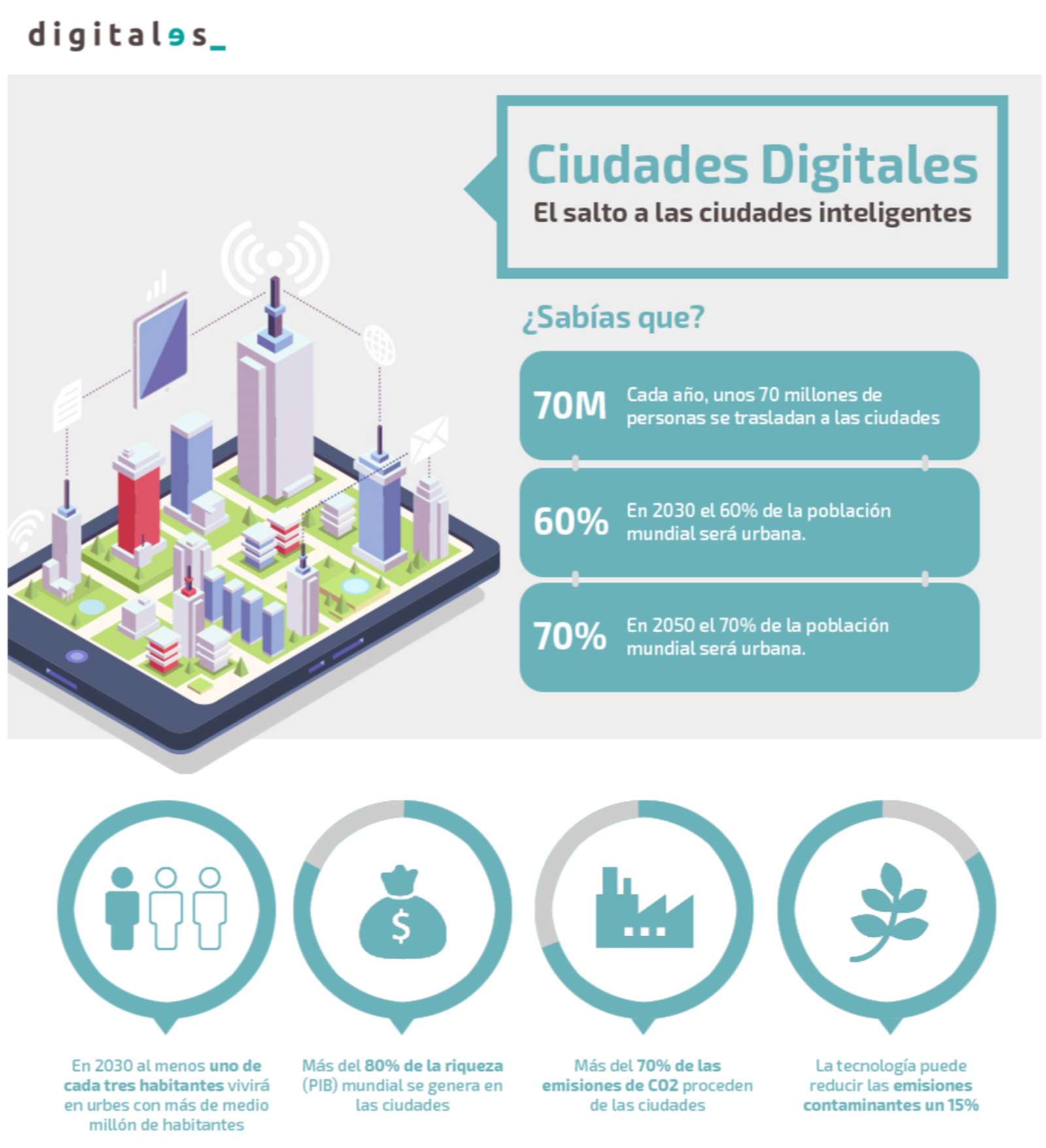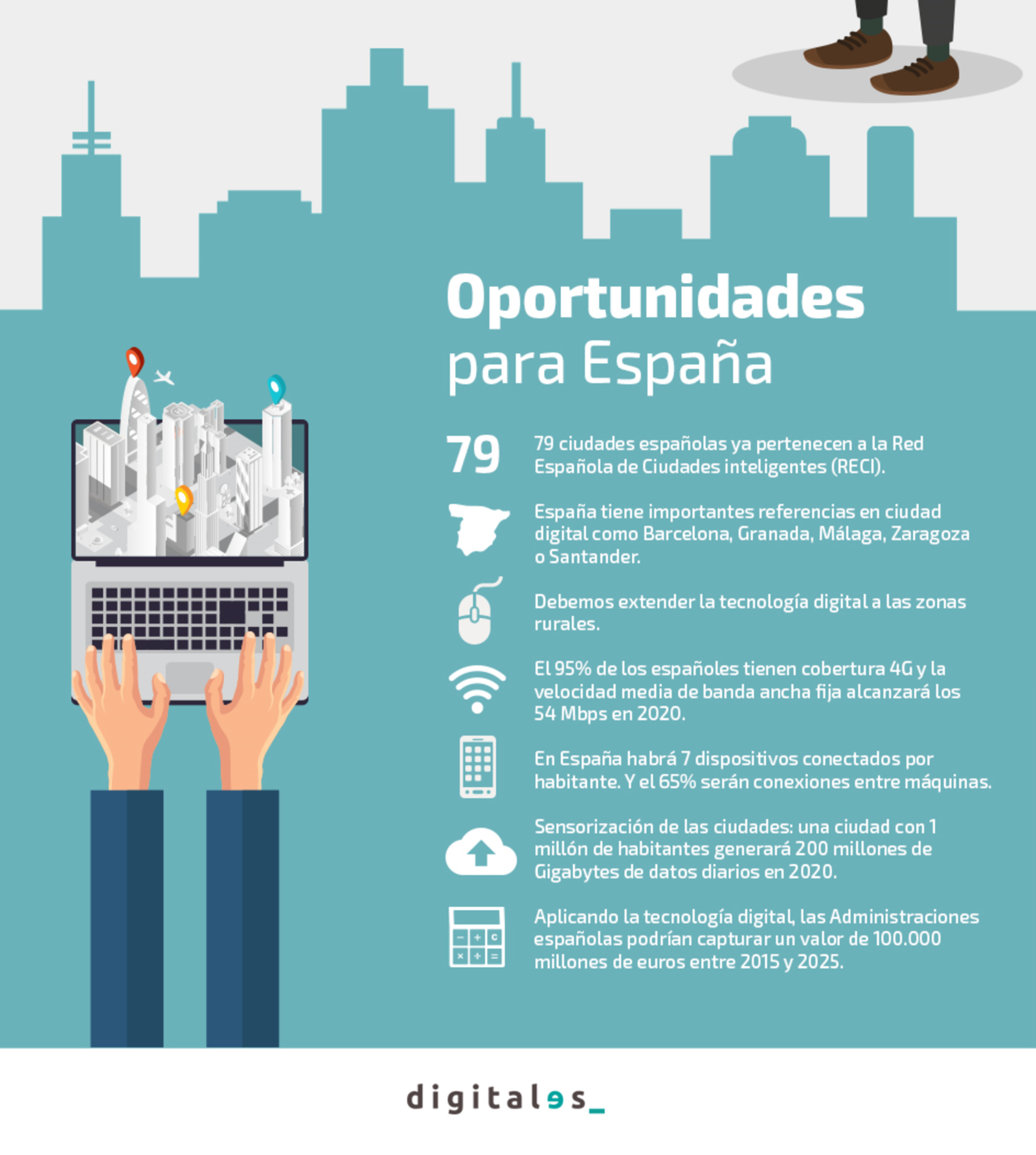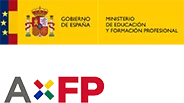21/11/2018
More than 80% of the world’s wealth (GDP) is generated in cities. No wonder. Nearly two out of every three people live there. Every year, 70 million inhabitants move to cities, and they do so in towns of considerable size: by 2030, at least one in three inhabitants will live in cities with more than half a million inhabitants.
It also has its downside, of course. 70% of CO2 emissions come from cities. However, the technology can reduce these pollutant emissions by 15%.

It is therefore more necessary than ever to advance in a Digital City or Smart City model that solves the most immediate problems that will be faced in this demographic scenario in the coming years. Healthcare; Teleworking; Parking; Intelligent transportation and lighting; Smart grids (optimization of supply networks consumption); Water and waste management; Citizen participation (open data and open govemment) or management of public services are some of the areas to which technology and digitization of large cities, the place where most of the planet will live in the coming decades, can best contribute.
And how is Spain positioned to take on this challenge? 79 Spanish cities already belong to the Spanish Network of Smart Cities (RECI). Most importantly, 95% of Spaniards have 4G coverage and the average fixed broadband speed will reach 54 Mbps by 2020.
Connectivity is crucial for the development of smart cities. A city with one million inhabitants will generate 200 million Gigabytes of data per day by 2020. In Spain there will be 7 connected devices per inhabitant. And 65% will be machine-to-machine connections.
Spain has the best connectivity in the world, behind Korea and Japan. Hence, the development of SmartCities represents an opportunity for the Spanish economy. By applying digital technology, Spanish administrations could capture a value of 100 billion euros between 2015 and 2025.

And which Spanish cities have done their homework? Some of the cities have already developed cutting-edge projects in this area, as was seen at the First Conference on Smart Territories organized by DigitalES in Santander.
Grenada: Dynamic Waste Collection
The Andalusian city has developed a project to analyze the condition of containers using sensors and optimize collection routes to reduce noise and pollution levels.
Ferrovial Services, together with the Granada City Council and Cisco, has implemented an urban laboratory in six neighborhoods of Granada; Ronda, Zaidín, Genil, Beiro, Chana and Norte. By placing sensors in the containers, it will be possible to know their filling status on a continuous basis, and thus optimize and prioritize the routes for their collection. In addition, by applying analytical models and algorithms to the data already obtained, it will be possible to forecast and change truck routes to make them more efficient.
Santander: E2E System Waste Management
NEC has developed a smart waste collection solution for the city of Santander in Spain in partnership with waste management service provider ASCAN. The just-in-time collection service uses M2M sensors that record the volume of garbage in the garbage cans, which is transmitted through data collectors, repeaters and mobile network to the control center. The city’s garbage collection team and citizens will be able to use the «Cuida Santander» app to report problems with illegal dumping.
Barcelona: Integration and evolution of telecommunications networks
NAE has offered support to IMI to develop various projects with the objective of developing the infrastructure to support SmartCity and, additionally, to accompany the bidding processes based on innovative public procurement. The most relevant projects have been:
– Definition of WiFi 2.0 technology strategy
– Conceptualization of fiber optic and WiFi integration, including governance model.
– Feasibility study, drafting and support for the implementation of municipal WiFi.
Valencia Smart City
The VLCi platform is the first smart city platform to be deployed in Spain that complies with the European FIWARE standard, based on the use of open SW components.
It compiles key city and urban services management indicators to improve efficiency in the management of urban services. In addition, it defines city indicators, complying with the ISO37120 standard for sustainable cities. All information is processed in the VLCi Platform and published through Dashboards (internal use), Transparency and Open Data Portal and Big Data.
Madrid, integrated management of public space
Implementation of the smart city model in a large city in collaboration with IBM and specifically in the integrated management of public space. A highly complex project that has been a reference in the application of smart city technologies in public space and citizen relations.










